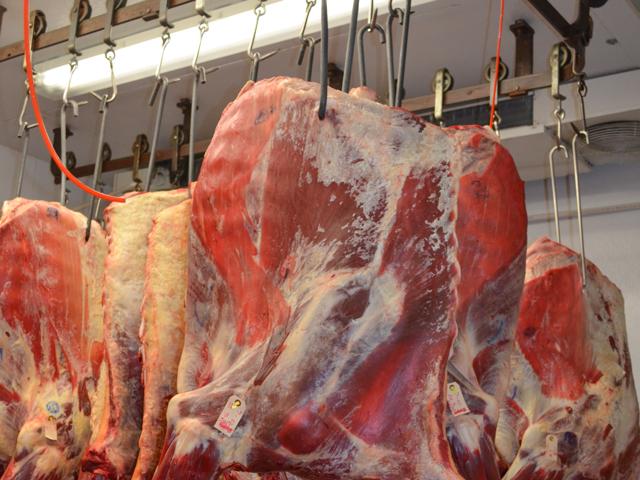Packing Plants to Face Runoff Limits
EPA Proposes Plans to Cut Nitrogen, Phosphorous Runoff From Meatpacking Plants
LINCOLN, Neb. (DTN) -- EPA plans to limit pollution runoff from at least some meatpacking plants and launched a formal 60-day public comment period on Tuesday for a proposed rule that provides three different options.
Even before the posting of the rule on the Federal Register, environmental groups were calling Monday for the agency to implement the most stringent of those rules.
The EPA announced its preferred option is to strengthen effluent limitations created in 1974 and 2004 to control nitrogen and for the first time to limit phosphorous discharges.
"The preferred regulatory option would also establish, for the first time, pretreatment standards for indirect discharging facilities to control the pollutants oil and grease, total suspended solids, and biochemical oxygen demand," EPA said on its website.
"The preferred regulatory option would apply to approximately 850 of the 5,000 MPP facilities nationwide."
Two additional options proposed by EPA would apply effluent limits on direct discharges from meatpacking plants as well as pretreatment standards on facilities that indirectly discharge pollutants.
According to an EPA analysis of the proposal, the total direct and indirect annual costs of the rule to meatpacking companies range from $210.3 million to about $1.1 billion.
P[L1] D[0x0] M[300x250] OOP[F] ADUNIT[] T[]
The EPA proposal would result in cutting nitrogen pollution from some of the largest meat-processing plants in the country.
For example, John Morrell and Company's pork-processing plant in Sioux Falls, South Dakota, along the Big Sioux River, releases about 867,000 pounds of nitrogen annually, according to information from the Environmental Integrity Project. The EPA proposal would cut that pollution by about 92%, according to EIP.
The EPA released the proposal back in December and one meatpacking industry group expressed general support for what the agency proposed.
Chris Young, executive director of the American Association of Meat Processors, said in a December statement that his group was "encouraged" by the work the EPA had conducted on the proposal.
However, he said the EPA should have gathered more data before issuing the proposal.
"AAMP is still concerned about the overall impact of the rule on the industry as a whole, and we would have liked to have seen EPA spend more time gathering data from a larger sampling of plants to get a better picture of the industry as a whole, rather than testing wastewater from a handful of plants," Young said.
"I think it would have been beneficial for both industry and EPA if there had been more of a collaboration between the two to come up with some real common-sense answers to these wastewater concerns."
A coalition of environmental groups on Monday said all three proposals would reduce pollution from fewer than half of the 3,879 meat-processing plants.
The EPA's latest proposal came about after a coalition of environmental groups sued the agency in 2019 and 2022.
The groups include the Environmental Integrity Project, Earthjustice, Cape Fear River Watch, Rural Empowerment Association for Community Help, Waterkeepers Chesapeake, Waterkeeper Alliance, Humane Society of the United States, Food and Water Watch, Environment America, Comite Civico del Valle, Center for Biological Diversity and Animal Legal Defense Fund.
The same coalition initially challenged the Trump administration's decision not to update water pollution control standards for meat-processing plants in 2019.
As a result of a lawsuit, EPA pledged to strengthen its regulations without committing to a timeline. The coalition then filed a second lawsuit in December 2022 and EPA committed to propose new standards by December 2023 and publish final standards by August 2025.
EPA has scheduled two public hearings on the proposals. The first is an online hearing scheduled for Wednesday and a second is slated for Jan. 31 at EPA headquarters in Washington, D.C., https://www.epa.gov/….
Todd Neeley can be reached at todd.neeley@dtn.com.
Follow him on X, formerly known as Twitter, @DTNeeley.
(c) Copyright 2024 DTN, LLC. All rights reserved.




